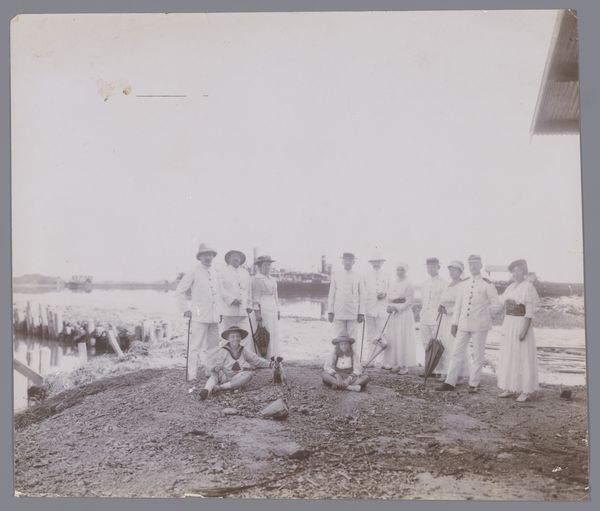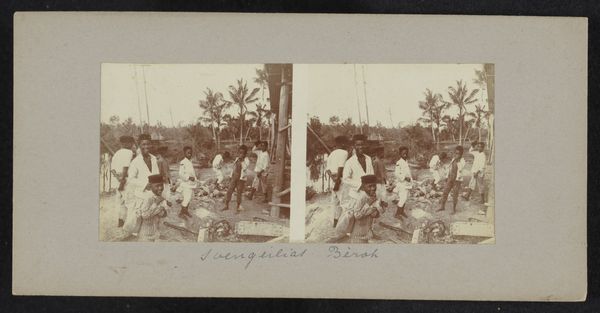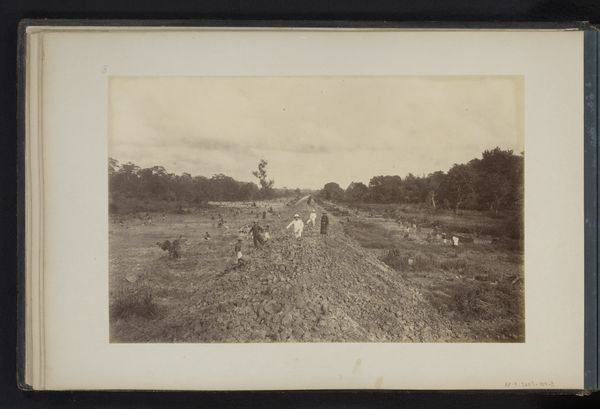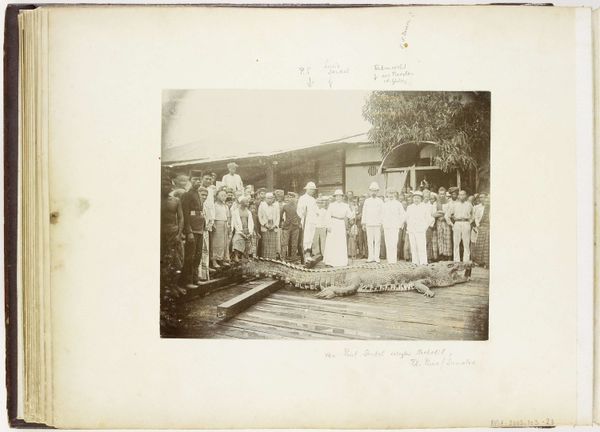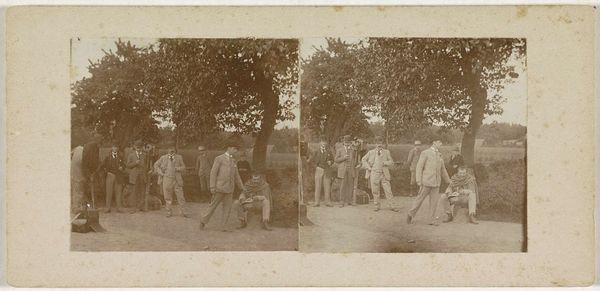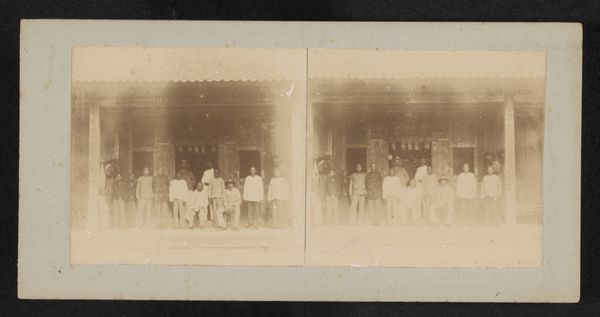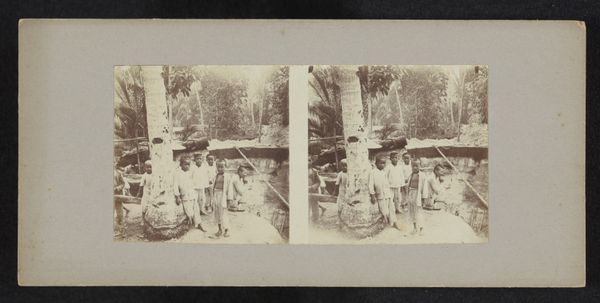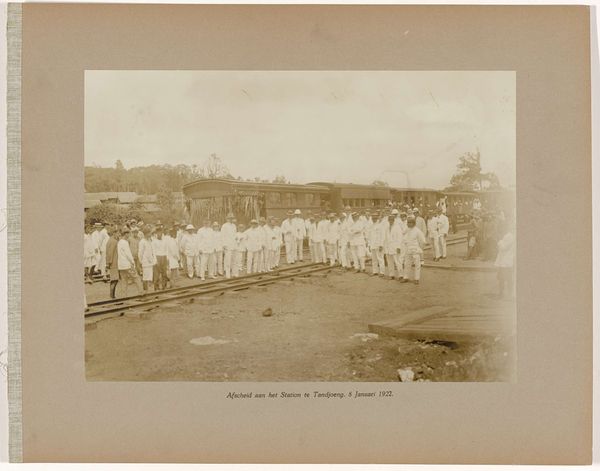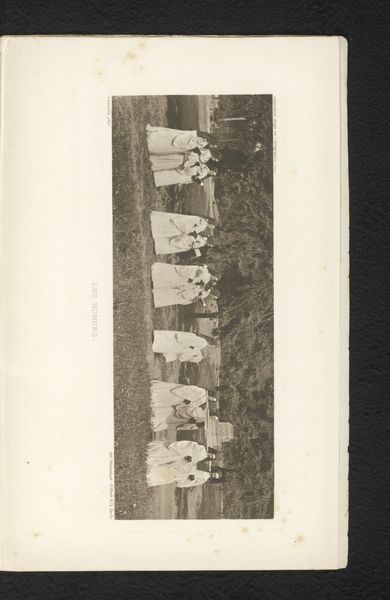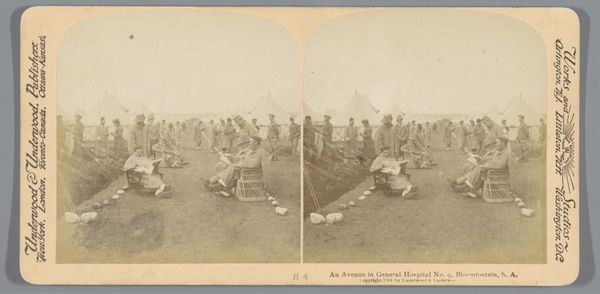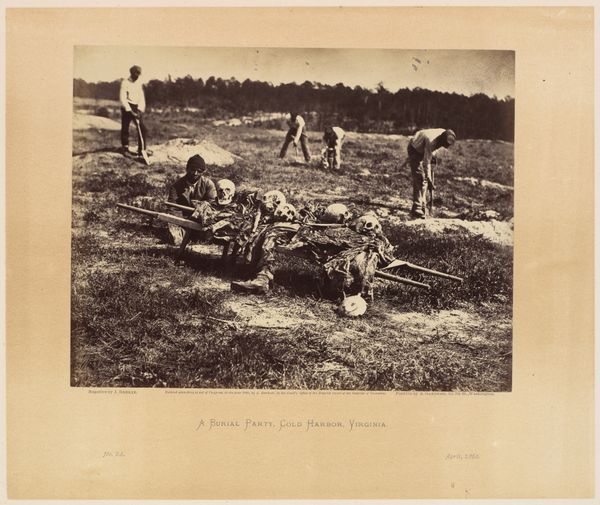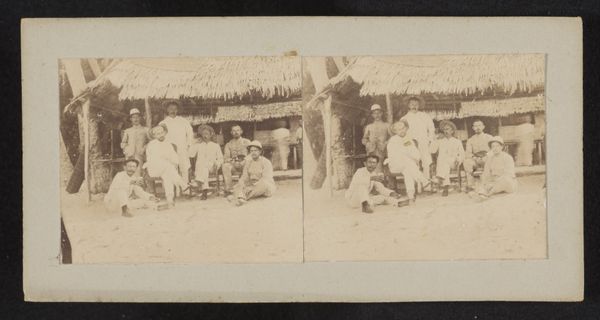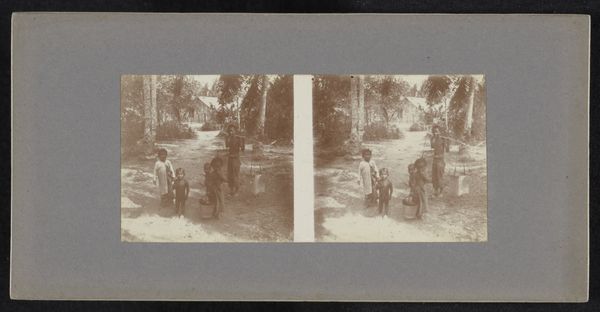
photography, photomontage
#
portrait
#
photography
#
photomontage
#
genre-painting
#
realism
Dimensions: height 55 mm, width 60 mm, height 88 mm, width 178 mm
Copyright: Rijks Museum: Open Domain
Editor: This is “Groepsfoto,” a photograph, likely a photomontage, by Robert Julius Boers, dating from somewhere between 1900 and 1922. It's currently housed in the Rijksmuseum. It strikes me as oddly formal. What do you see in this piece, considering its historical context? Curator: This image presents a carefully constructed reality, steeped in the politics of colonialism. These figures, uniformly dressed in white, likely represent Dutch colonial officials or plantation managers. The staging within a cultivated landscape reveals a narrative of power and control over both the land and the local population. The stark contrast between the subjects and the darker, almost obscured, background plants hints at a power dynamic, and a colonial imposition onto an unknown land. Does the photomontage aspect lead you to question the "truth" of this supposedly "realist" scene? Editor: That’s a really insightful point about the staging. I hadn’t considered the "truth" of it so deeply, and the power dynamics in play. I was mainly seeing it as just an archaic photograph of white-clad men in pith helmets, but the landscape becomes such an important feature, once it is looked at through an historical context! Curator: Precisely! The construction of this image serves to legitimize and perpetuate colonial ideology. Their whiteness becomes symbolic of purity and authority, contrasting against what they would deem the ‘uncontrolled’ environment and implicitly, the indigenous people. By the 20th century photography had a reputation as evidence of reality. Thinking about this image as genre-painting through photography helps to uncover deeper truths, wouldn't you say? Editor: Absolutely! Now I can see that the staging isn’t just about formality. The figures present themselves in an attempt to embody authority over a foreign space. It completely changes how I read this photograph! Curator: Examining images like this compels us to confront the legacies of colonialism and their lasting impact on contemporary society. What this "groepsfoto" masks, for instance. is as important as what it presents. Editor: I agree. Thank you. I'll never look at historical photos the same way.
Comments
No comments
Be the first to comment and join the conversation on the ultimate creative platform.
